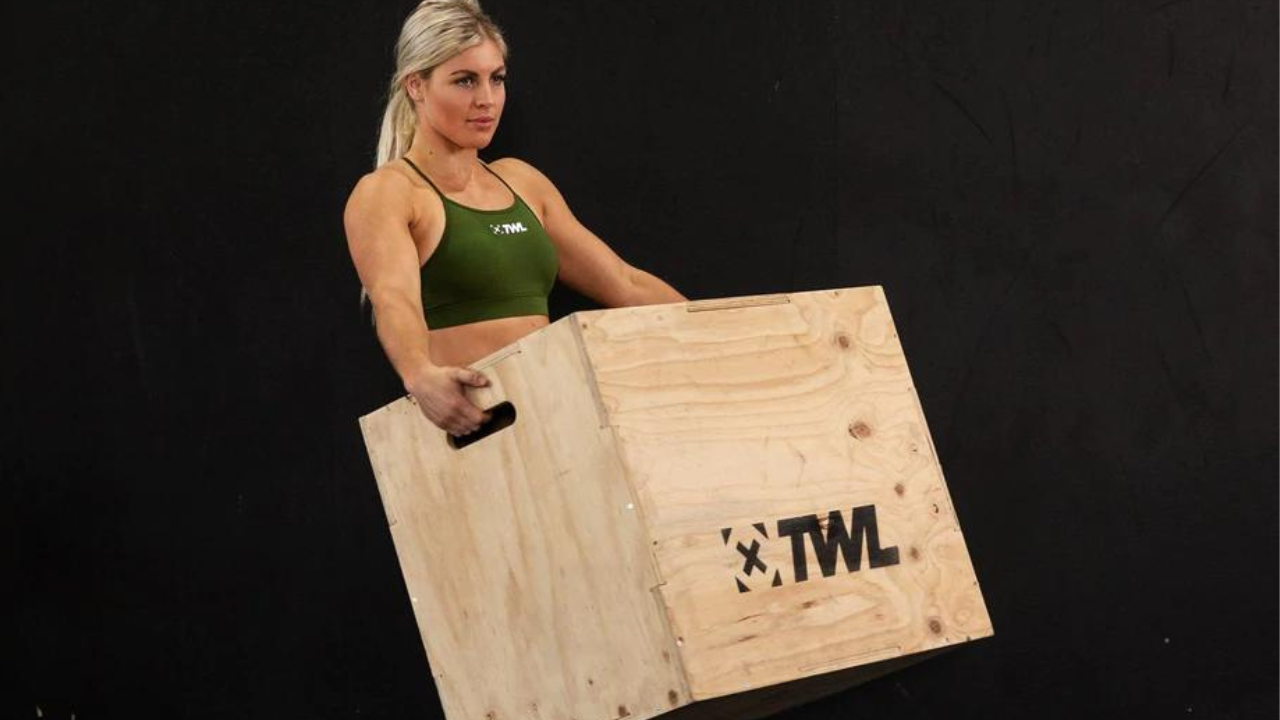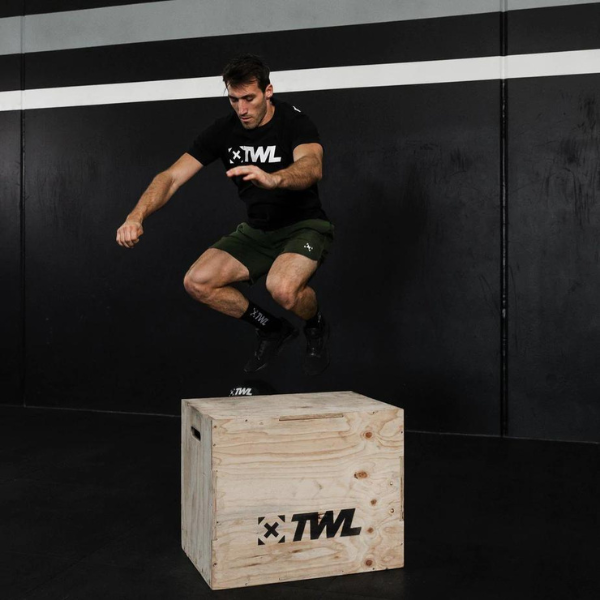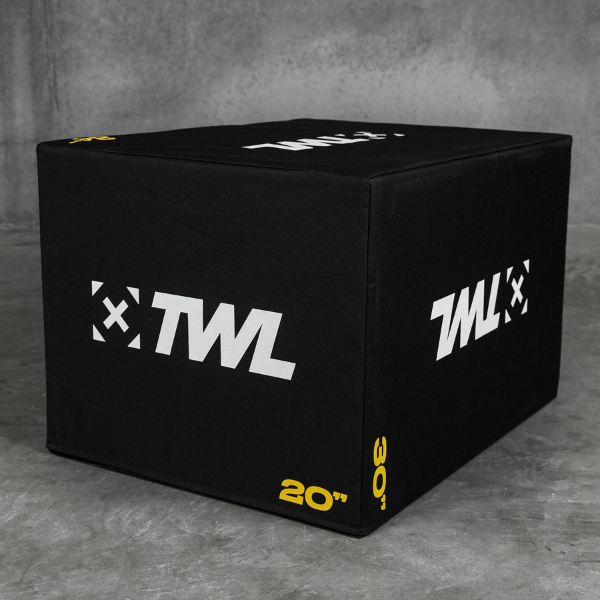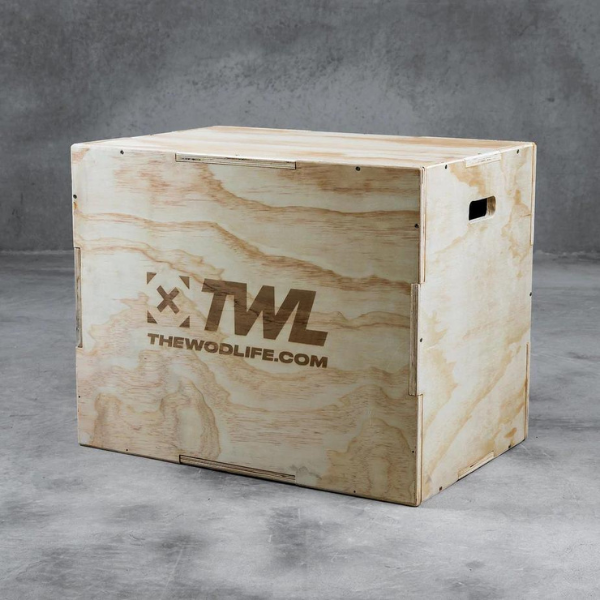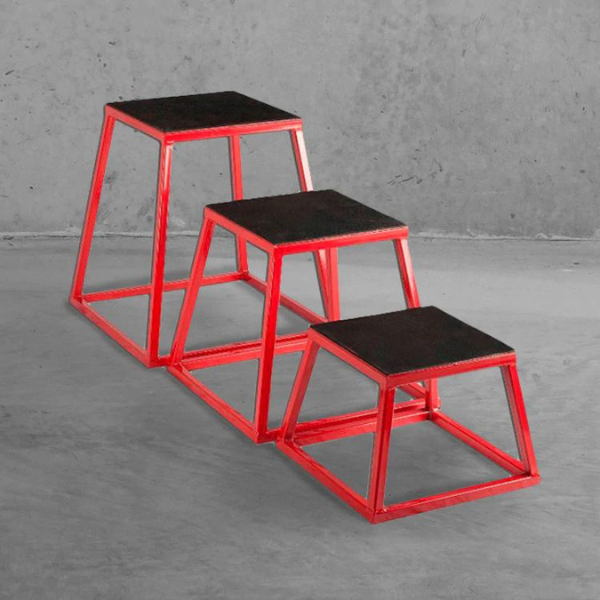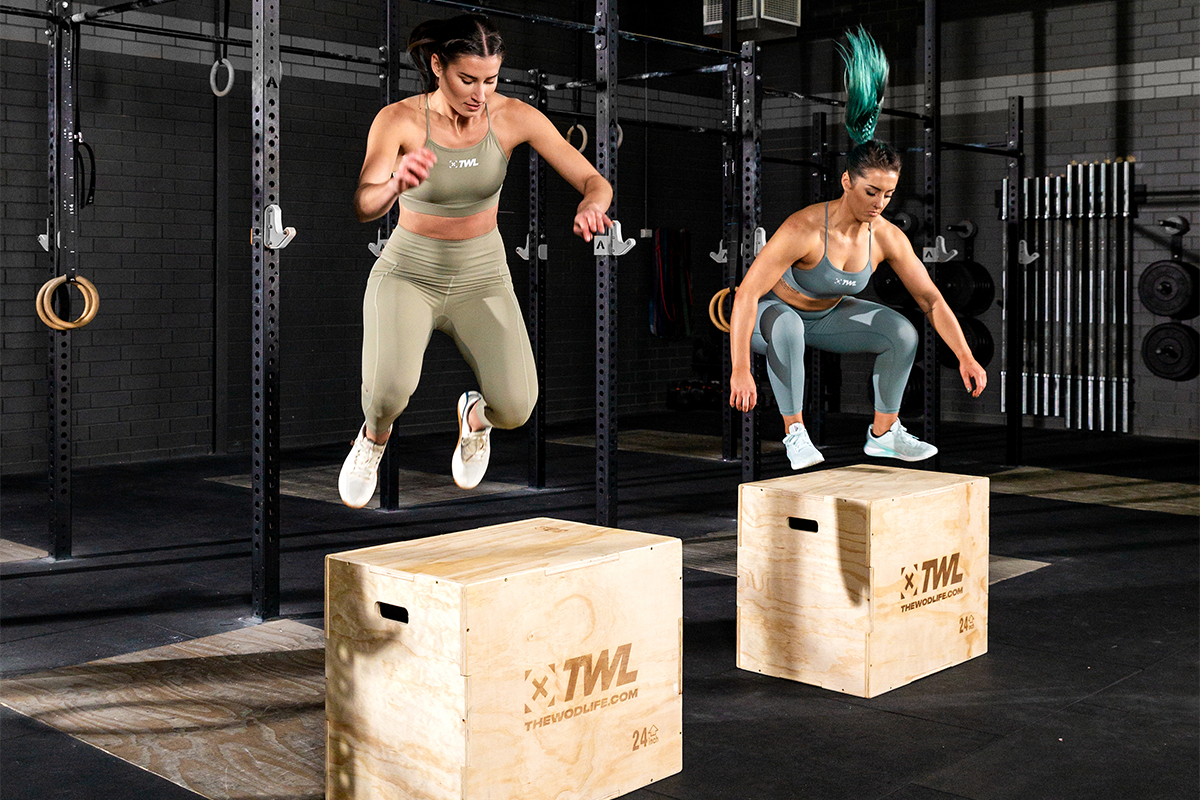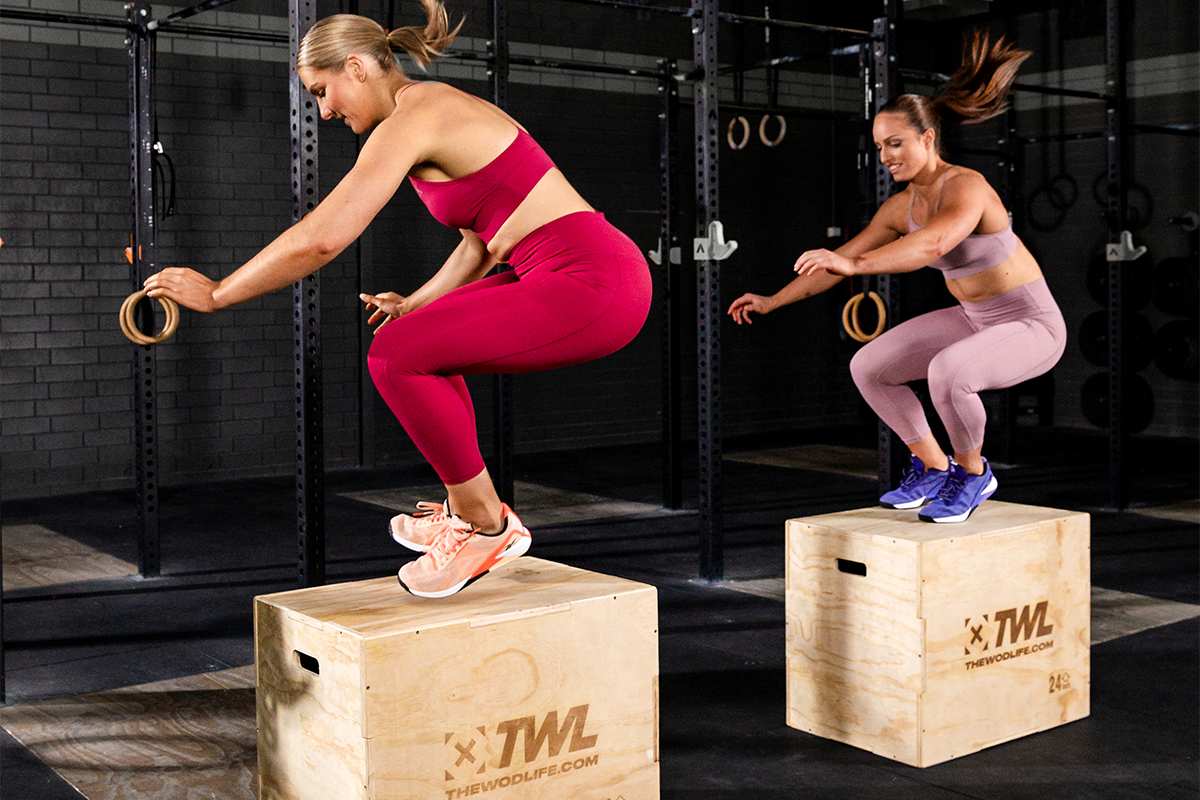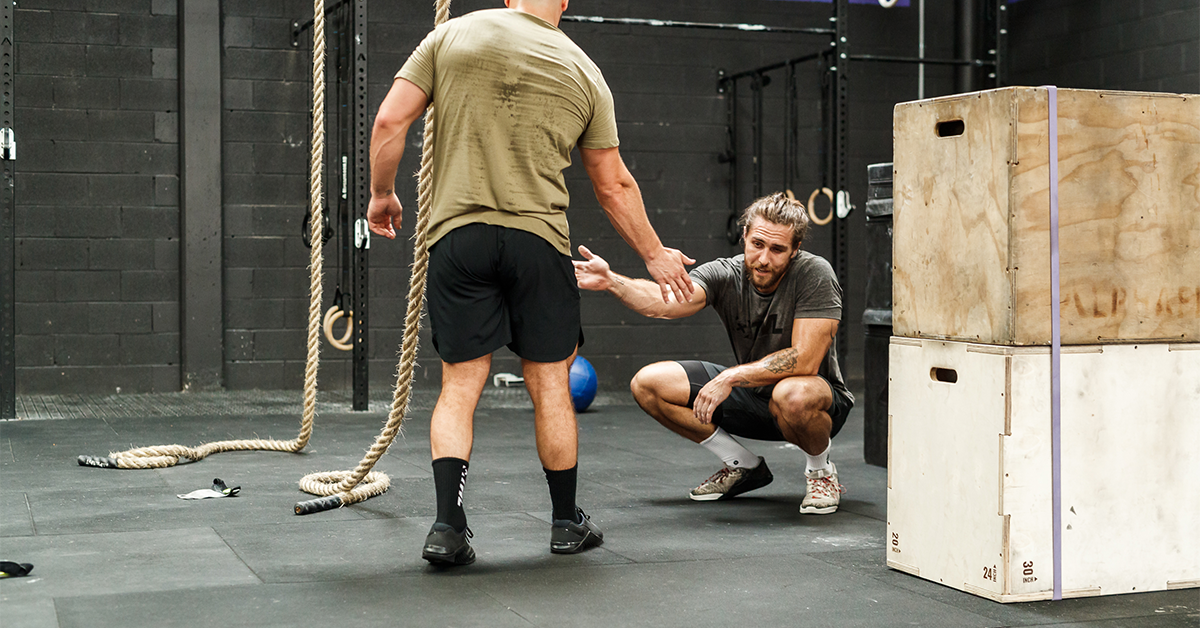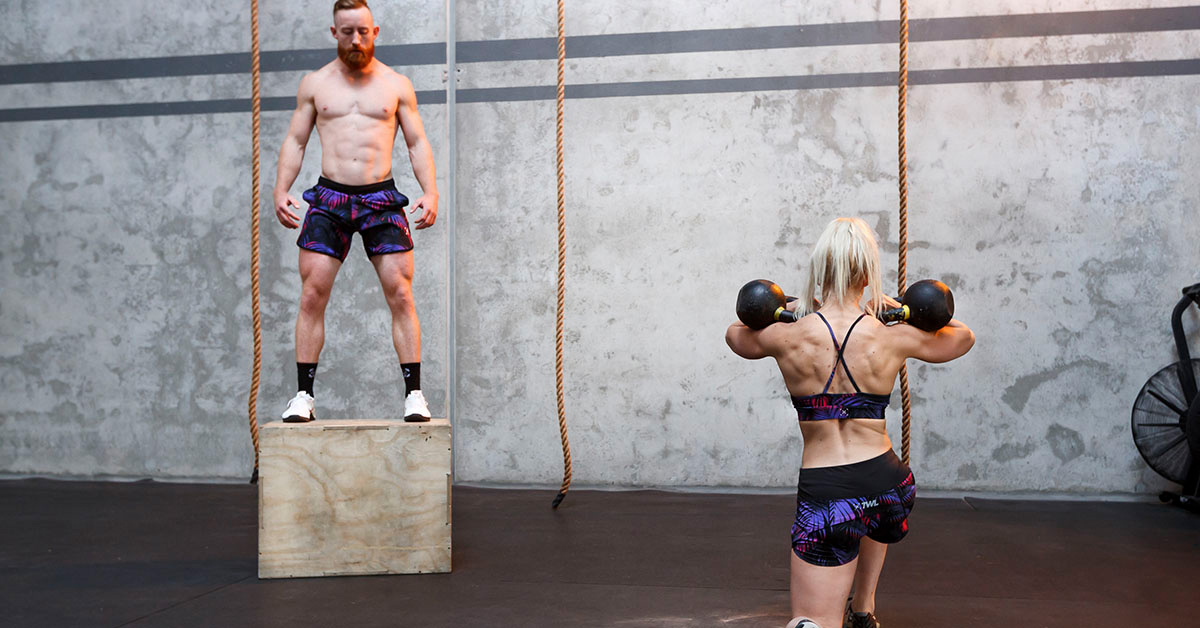Box jumps are a staple movement in most functional fitness gyms around the world. And thankfully, the plyo box is a piece of equipment you can easily incorporate into your home gym, too. What do you need to consider when buying a plyometric box? What are your options like? Let’s dive in!
The Ultimate Guide to Plyo Boxes
In this guide, we’ll talk about:
- What to look for in your equipment.
- The various types of plyo boxes.
- How to use your plyo box.
3 Things to Look for in a Plyo Box
Let’s start at the beginning. As you’re shopping, keep these three things in mind.
1. Find a Plyo Box That Offers Multiple Height Options
A box with one height is an opportunity wasted. You should be able to use your box at multiple heights by other either the box on each of its different sides or by having stackable boxes/steps. (More on that in a minute!)
Typically, there are three box jump height standards:
- 51 cm/20 in
- 61 cm/24 in
- 76 cm/30 in
If you’re using stackable steps, these heights might vary.
2. Test its Stability
We’ve all seen one of those blooper videos where an athlete performed a box jump and the box ended up tipping over. While your technique plays a role in this, so does the stability of the box itself.
You need something sturdy that doesn’t easily tip, wobble, or slide against the ground. Using your hands, try rocking the box from side to side and see how easily it shifts around.
3. Consider the Material and Build
Some boxes are padded on the outside. Others are bare wood. Some “boxes” are actually stackable steps. The option you go with will depend on your own needs and goals.
And speaking of which…
3 Types of Plyo Boxes
Now that you know a bit more about what to look for in a plyo box, let’s go through what some of your options are!
Shop Now
1. Padded Plyometric Box
A lot of athletes prefer a padded box because it protects their shins. If you miss the rep and don’t make it onto the box, you won’t scrape your shins on your way down to the ground. (You could also just grab a pair of shin/calf guards.) However, the padding on this box isn’t soft or thick enough to give you a sinking feeling. So, you still have a solid surface to safely land on. The box weighs 22kg, so it’s light enough to move around your gym but heavy enough to stay put when you’re using it.
It offers three heights: 20″, 24″, and 30″ (51, 61, and 76cm). The heights are written on the tough vinyl cover, which is removable and lasts for years.
This plyo box should be used on gym matting. Avoid using it on concrete, bitumen, wood, tiles, or carpet.
2. Standard Wood 3-in-1 Box
This wood plyometric box arrives flat with all needed screws and is easily assembled with a screwdriver or drill and some wood glue. Once assembled, it offers the same three height options as the padded box: 20″, 24″, and 30″ (51, 61, and 76cm). It’s easily adjusted by flipping it onto its various sides. The strong wooden design is reinforced with a centerpiece, making it an incredibly durable piece of equipment that’ll give you a lifetime of box jumps.
3. Plyometric Box Set of 3
These stackable steps are quite different from the previous two options. It includes three height options: 12″, 18″, and 24″. So, it doesn’t get quite as high as the other plyo boxes, which is a great option for box jumps for beginners and people who need the ability to scale their box jumps more.
These platforms are made from square tubular steel construction with fully welded frames, making them extra stable and durable. The high-grip landing surface means you have a secure and reliable area to land on. And because these are stackable, they take up very little space and are more compact. Each individual piece is lighter, too, meaning you can easily move them around.
These are the three most standard plyo box options. What you go with really comes down to preference.
If box jumps make you a little nervous — which we totally understand — then a padded box can help you build confidence and get more comfortable with the movement. Otherwise, a standard wood plyo box is always a reliable option and what you’ll find in the average commercial gym.
If you want something lighter with shorter height options, the stackable steps are a great choice. Athletes often find these less intimidating and will start here before graduating to a regular box. Because of the endless exercises you can do with boxes/steps — far beyond jumps — having both pieces of equipment in your gym never hurts. And that brings us to our final point…
How to Use Your Plyo Box
While box jumps are an obvious go-to, there are countless other plyo box exercises you can use to spice things up, including:
- Step-ups.
- Burpee box jumps.
- Burpee box jump-overs.
- Feet-elevated push-ups.
- Scaled push-ups with your hands on the box.
- Scaled handstand push-ups.
- Box squats (which will help make your box jumps better!).
- Box dips.
The plyo box is a versatile piece of equipment that helps you build strength, speed, cardiovascular endurance, and explosiveness. There are infinite ways to use it, making it a must-have for your gym.
Ready to build your engine and work on your lower-body strength? You’re going to need a plyo box! Shop our selection of plyo boxes today and find the one that best suits your needs and goals.

